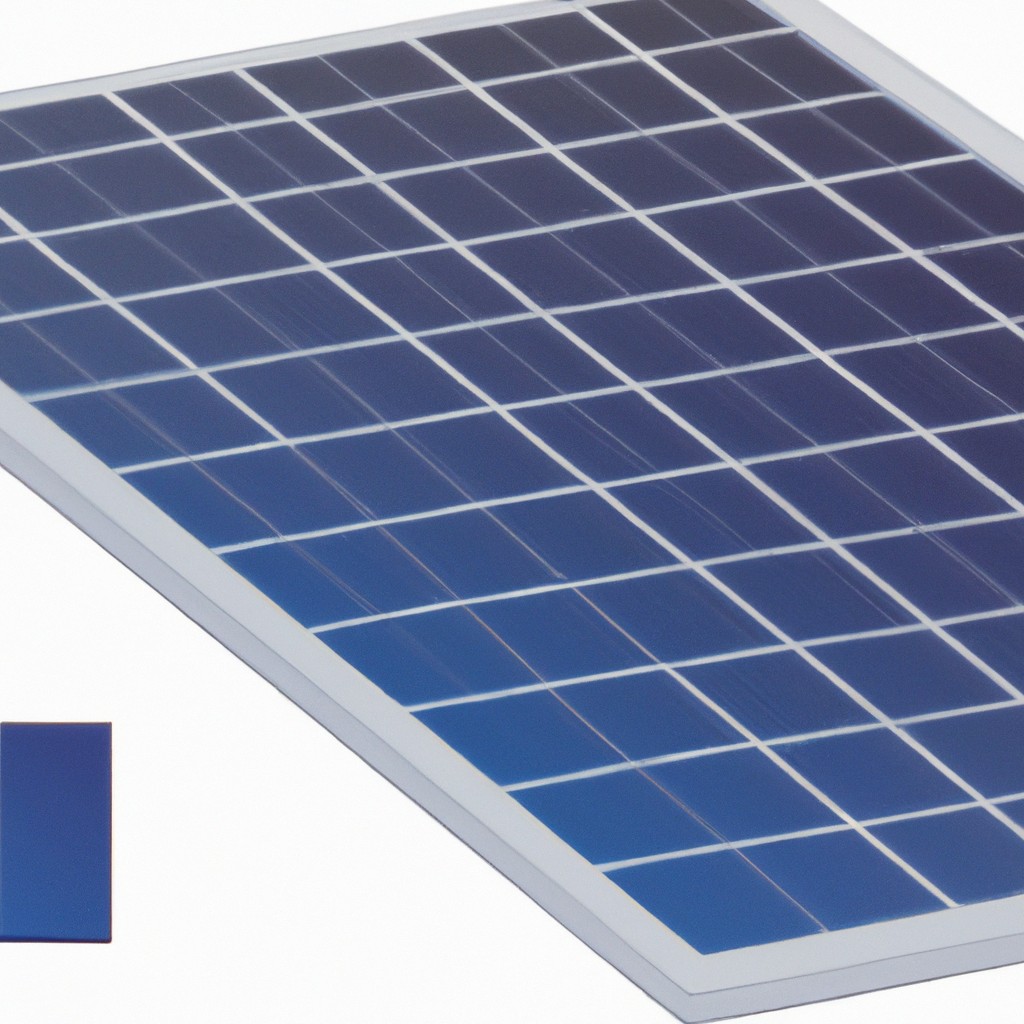This article will explain what a solar cell is and how it works to convert sunlight into electricity.
Key takeaways:
- Solar cells convert sunlight into electricity through a process called photovoltaics.
- The choice of materials used in solar cell construction greatly affects efficiency.
- Research is focused on improving efficiency and reducing production costs.
- Declining costs and incentives have led to exponential growth in solar installations.
- Solar cells are used in residential power generation, transportation, remote areas, space exploration, and consumer electronics.
Solar Cell Structure and Operation

Solar cells, also known as photovoltaic cells, convert sunlight directly into electricity. At the core of this process is a material such as silicon, which is doped to create a positive layer and a negative layer. These layers set up an electric field crucial for this energy conversion.
When photons from the sun hit the silicon cell, they knock electrons free from atoms, initiating an electrical flow. This flow, harnessed through metal contacts on the top and bottom of the cell, forms the current.
The electrical productivity of a solar cell is heavily influenced by its purity and the quality of the silicon used. Manufacturers often add layers and coatings to protect the cell and improve its efficiency. These include anti-reflective coatings which help absorb more light and textured surfaces which trap light in the silicon.
Efficiency and Materials
The performance of a solar cell hinges significantly on the choice of materials used in its construction. Silicon remains the most popular due to its availability and cost-effectiveness, catalyzing its widespread adoption in residential solar panels. Manufacturers continually refine the purity of silicon to boost its ability to convert sunlight into electricity, directly impacting overall efficiency.
Emerging materials like perovskite offer promising alternatives with potentially higher efficiency rates, though their long-term stability and large-scale production are still being refined. These materials appeal because they can be used to create lightweight, flexible solar panels, suitable for a variety of surfaces that traditional panels might not accommodate.
Researchers are also enhancing existing materials with new technologies such as doping — the addition of small amounts of other elements — to improve performance. For instance, doping silicon with phosphorous increases the flow of electricity, thereby increasing the solar cell’s efficiency.
Every incremental improvement in materials science not only boosts the efficiency but also expands the potential applications of solar energy, pushing the boundaries of how and where it can be used effectively.
Research in Solar Cells
Recent advancements in solar cell technology focus on enhancing efficiency and reducing production costs. Scientists are experimenting with new materials like perovskite, which offers high efficiency at a lower manufacturing cost compared to traditional silicon-based cells.
Multi-junction cells, which layer multiple semiconductor materials, capture a broader range of the solar spectrum, thereby increasing energy conversion rates. This approach is particularly promising for space applications.
Another significant area of research is the development of organic solar cells. These are made from carbon-rich polymers and are less expensive to produce than silicon-based cells. While currently less efficient, their flexibility and diverse applications in wearable technology and portable devices present a huge potential for growth.
Efforts are also directed at making solar cells more durable and weather-resistant to ensure long-term reliability and performance in various environmental conditions.
Declining Costs and Exponential Growth
The plummeting price of solar technology is nothing short of a revolution in the energy sector. In the last decade alone, the cost of solar panels has dropped by more than 70%. This dramatic decrease is primarily due to advancements in manufacturing processes and economies of scale as global demand for renewable energy sources soars.
This cost reduction has fueled exponential growth in solar installations worldwide. As solar energy becomes more affordable, an increasing number of homeowners, businesses, and governments are investing in solar systems. This surge in adoption is critical for reducing greenhouse gas emissions and combating climate change.
Furthermore, financial incentives and supportive regulatory frameworks in many countries have made solar investments even more attractive. These policies are designed to accelerate the shift towards renewable energy by making solar power more accessible to a broader audience.
The continued innovation in solar technology suggests that costs may continue decreasing, potentially making solar the most economical choice for power generation globally. This trend is a clear indicator of solar energy’s potential to dominate the future energy landscape.
Applications
Solar cells have found their way into a variety of everyday and industrial applications, revolutionizing how we use energy. Here are a few notable uses:
- Residential Power Generation: Many homeowners equip their rooftops with solar panels to harness sunlight for electricity, significantly reducing their utility bills and carbon footprint.
- Transportation: Solar-powered cars, boats, and even some airplanes use photovoltaic cells to either supplement or provide all the necessary power for operation. This technology is expanding the boundaries of eco-friendly travel.
- Remote Areas: Solar energy is a game changer for supplying power in remote or rural locations where traditional electricity infrastructure is cost-prohibitive or non-existent.
- Space Exploration: Spacecraft and satellites often rely on solar cells to power their systems. The durability and efficiency of these cells are key in environments where no other power sources are available.
- Consumer Electronics: Portable chargers for phones, watches, and other gadgets frequently utilize small-scale solar cells. These devices offer a convenient way to keep electronics charged, especially when on the move.
By incorporating solar cells in multiple facets of technology and daily life, we are taking significant strides toward a sustainable and energy-efficient future.




